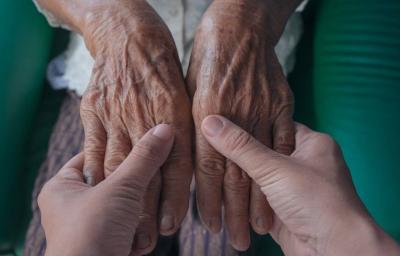A team of scientists believes they are close to solving the aging issue and that treatments to slow down the effects of aging could emerge in the next decade, according to a report by the British Daily Mail. This announcement comes from researchers at the University of Cambridge, who suspect that the answer lies in elephants, whales, and the "immortal jellyfish," which possess longer lifespans and cancer resistance. They theorize that the key to their longevity may be their ability to repair damage in their DNA.
Cambridge scientists are now working to recreate these capabilities to make them transferrable to humans, which could rejuvenate cells and return them to a younger functional state, delaying the onset of all age-related conditions. DNA damage accumulates in the human body when it is subjected to everyday life stresses, such as UV rays from the sun, pollutants from vehicle and factory emissions, and even charred foods. DNA repair prevents the accumulation of genetic mutations that ultimately lead to disease and death in old age, as noted by researcher Alex Kagan and his colleagues at Cambridge, who studied animals including elephants, whales, and jellyfish.
Delfin Lario, in a statement to the Cambridge Independent, expressed: "It's a really exciting time for aging research," believing that she and her colleagues think "the world will start to see the emergence of human interventions against aging in the next decade." She elaborated that one area being studied for strategies to combat aging effects relates to large mammals like elephants and whales.
**Cancer Resistance**
Both mammals, elephants and whales, have unique genes associated with cancer resistance and DNA repair. Humans also possess a gene called p53 but have significantly fewer copies—only two compared to 20 in elephants. Scientists believe this is why the estimated cancer mortality rate is around 4.8% in elephants despite their large size, while the rate among humans ranges from 11 to 25%.
The study results indicate that whales have 2.4 times the amount of tumor-suppressing genes. If whales were exposed to the same cancer risk per cell as humans, multiplied by quadrillions of cells, they would not survive past their first year. According to researcher Kagan, these indicators confirm that "whales must have better mechanisms to resist cancer than humans."
**Bowhead Whale**
Kagan added that "everything they (the whales) do, some of which can live up to 200 years, to resist aging is what makes them less susceptible to cancer." He explained that "if mutations in DNA cause aging and cancer, then reducing the mutation rate through more precise responses to DNA damage could solve both problems simultaneously," speculating that the answer lies not in tumor-suppressing genes but in direct DNA repair mechanisms in the bowhead whale, which can live for over 200 years. According to a study published on bioRxiv, the bowhead whale produces proteins that repair cracks in DNA strands rather than eliminating cancerous cells as p53 does.
**Immortal Jellyfish**
While these mammals may hold the key to treating age-related diseases, the "immortal jellyfish" could completely slow down the aging process. The jellyfish activates this "superpower" to evade predators, allowing it to revert to a polyp stage and then reform while attached to the sea floor. When the threat disappears, the creature begins to mature again. This ability allows it to repair genetic damage and return to earlier stages of development. Even after reaching sexual maturity, the jellyfish can revert back to a larval stage.
**Biological Longevity**
Researchers examining the jellyfish's genome found that this "immortal jellyfish" is unique among jellyfish, being "the only one that maintains high regenerative potential (up to 100%) in post-reproductive stages, achieving biological immortality." However, DNA repair is not the only longevity strategy humans can learn from animals. According to new research published last month, the small jellyfish in the Pacific belongs to an exclusive animal club that can regrow lost body parts, and scientists know exactly how it does so. The Cladonema pacificum, a jellyfish the size of a fingertip, is so modest it doesn't even have a common name, yet it can regrow its lost tentacles within three days.
**Natural Stem Cells**
Researchers from Tohoku University and the University of Tokyo set out to discover exactly what happens to the cells inside the jellyfish's tentacles during regeneration. The Japanese research team found that natural stem cells at the injury site assist the stem cells that are specifically developed for limb repair. These two types of cells together grow a new limb from the remnant of the lost limb. Scientists believe these remarkable cells may hold the keys to unlocking human regenerative abilities, which is the secret to anti-aging research and longevity without chronic diseases.




